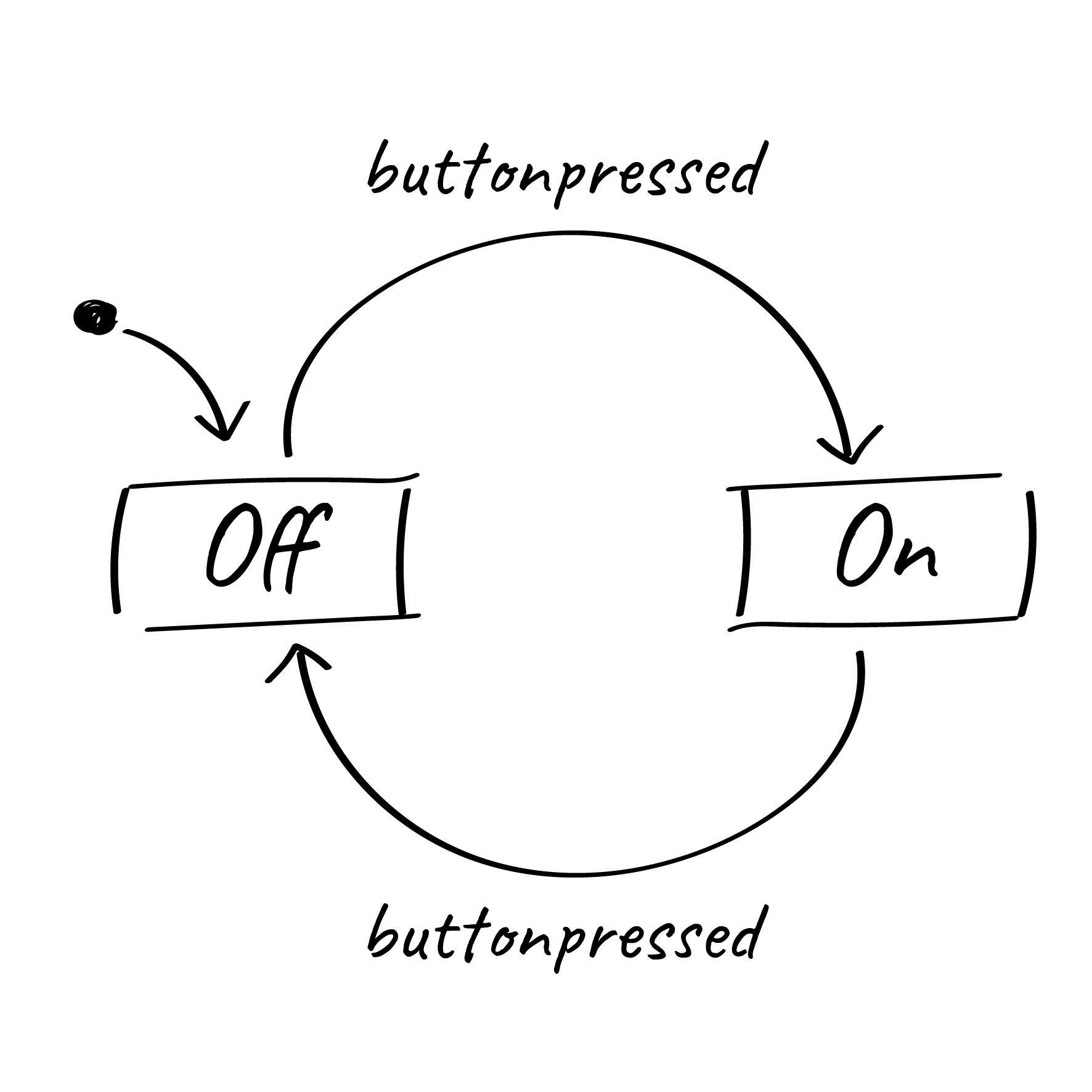Test Selection is hard. Writing all kinds of cases is horribly boring... Mealy allows you to write tests for Object Oriented Software in a more intuitive way while covering the most ground possible. With Mealy, you define your tests by implementing a State Machine. The framework will then traverse all the possible iterations of your state machine and test your classes thoroughly.
You can install Syntax via Swift Package Manager by adding the following line to your Package.swift:
import PackageDescription
let package = Package(
[...]
dependencies: [
.package(url: "https://github.com/nerdsupremacist/Mealy.git", from: "1.0.0")
]
)Let's say you're testing a Switch class. We of course don't know anything about the implementation, but we can imagine the class like a state machine:
To implement your tests, you implement each state. A state is a class with:
- A
test(system:)function, where you can run all your assertions. Verifying that the object is in the correct state. This function is using a Result Builder built for a tiny library called Assert. These types of assertion allow Mealy to manipulate the results, and provide more context, to help you debug your faults in the future. - A series of functions with a single argument (which is the system under test) and returns the next state.
class OffState: State {
func test(system: Switch) -> some Test {
Assert(!system.isOn, message: "Expected Switch to be Off")
}
func pressButton(system: Switch) -> OnState {
system.toggle()
return OnState()
}
}
class OnState: State {
func test(system: Switch) -> some Test {
Assert(system.isOn, message: "Expected Switch to be On")
}
func pressButton(system: Switch) -> OffState {
system.toggle()
return OffState()
}
}Then we can define the test cases, by adding a way to get to the initial state, and the initial system under test:
class TestCases: MealyTestDefinition {
func initialState() -> OffState {
return OffState()
}
func initialSystemUnderTest() -> Switch {
return Switch(isOn: false)
}
}To run the tests, call TestCases.test with .edge Coverage:
final class Tests: XCTestCase {
func testStateMachine() {
let cases = TestCases()
cases.test(desiredCoverage: .edge)
}
}This means that for the state machine, Mealy will create tests so that we cover every possible edge/transition of our State Machine. This means it will test 3 cases:
- Doing nothing (verifies that the Switch started in the Off State)
- Toggle
- Toggle (to On) -> Toggle (to Off)
The desired coverage tells Mealy when it's ok to stop testing. The options are:
- State coverage (stop when you have reached every state once)
- Edge coverage (stop when you have gone through every edge/transition once)
- Path coverage (stop when you have gone through every edge/transition combination possible (without cycles))
- Path coverage explodes exponentially. So in order to limit it a bit:
- Depth: Maximum depth of transitions allowed
- State Repeats: Maximum number of times you are allowed to reach any state
- Path coverage explodes exponentially. So in order to limit it a bit:
This framework is based on the ideas presented in the Object Oriented sections of the TUM lecture on Advanced Topics of Software Testing.
Contributions are welcome and encouraged!
Mealy is available under the MIT license. See the LICENSE file for more info.




